Audeze is one of only a handful of manufacturers to produce headphones with planar magnetic drivers, a technology promising higher fidelity sound and less distortion than traditional — and cheaper — dynamic cans. AppleInsider was able to take an extended look at the company's latest on-ear offering, Sine.
Design
Sine sits at the low end of Audeze's product lineup, but like its stablemates features a sleek industrial design constructed from top-shelf materials. Both the metal enclosure and headband are wrapped in leather, while the ear cushions come stuffed with supple, yet resilient foam.
Styled by BMW subsidiary Designworks, Sine sports a minimalist aesthetic, mostly organic in style with soft curves and very few sharp edges. Skeletonized, matte black metal peeks through the leather to frame a swiveling driver basket harness, giving the design a modern feel.
Audeze markets Sine as the world's first on-ear planar magnetic headphone, which means the two earcups sit atop the pinna, or fleshy part of the outer ear. Ample padding and a closed-back design prevent sound leakage, making for a tight seal and dynamic acoustics.
On-ear designs offer less coverage than over-the-ear units like Audeze's own EL-8 or LCD models, and Sine is no different. However, the headphone houses rather large 80mm-by-70mm drivers which, when placed in such close proximity to the ear canal, produces a rich, full-bodied sound unmatched by dynamic on-ear cans.
As with any on-ear model, Sine is snug and might be uncomfortable for people with glasses or large ears. In our experience the architecture, combined with a relatively tight fit, is prohibitive of long listening sessions lasting more than a few hours.
Like its more expensive offerings, Audeze went with a detachable cable arrangement for Sine, allowing users to switch between a Lightning connector with integrated "Cipher" processing or vanilla 3.5mm audio plug. The standard audio cable is included in the $450 package, while the Lightning version comes at a $50 premium. Both cables are flat and made from thick gauge material, thus preventing tangle.
Overall, Sine is a rock solid headphone built from quality materials. We saw no signs of wear and tear during our extended evaluation period, which involved over 50 hours of home and on-the-go listening. There is no doubt Sine is a well made product.
Usage
The build is top notch, but the star of the show here is Audeze's proprietary planar magnetic technology. With electromagnetic forces acting across a large diaphragm instead of a small voice coil, planar magnetic technology (Audeze's branded version is called Fluxor magnetic technology) is capable of highly accurate sound reproduction. That is if it's done correctly.
First a little background. Planar magnetic drivers are a happy medium between dynamic voice coil units and electrostatic drivers used in headphones like those produced by Stax. As the technology is not in wide distribution — mostly due to manufacturing costs — planar magnetics are limited to companies serving the niche audiophile market. If electrostats are exotic and dynamic is common, planar magnetic can be considered rare.
Dynamic headphones pass an audio signal to a coil of wire suspended between, or in close proximity to, a series of magnets. The alternating current causes the voice coil to oscillate like small piston. A diaphragm, usually made from fiber or plastic, attached to the coil generates sound waves.
On the other end of the spectrum, electrostatic drivers exert an electrostatic force directly on the diaphragm, usually an extremely thin doped film or inert material layered with a second conductive material. The diaphragm floats between two perforated metal plates that attract and repel the thin material to generate vibrations. Produced sound waves move through the perforations and on to the user.
Planar magnetic drivers can be thought of as a type of dynamic/electrostatic hybrid. In such systems, a conductive wire trace is embedded into a large, thin diaphragm that is then sandwiched between two stators (Audeze calls them Fluxors). An audio signal voltage passed through the stators exerts push-and-pull forces on the conductive traces, which in turn moves the diaphragm, creating sound.
Drivers are important, but so is everything that comes before it in the audio path. Audeze takes full advantage of Apple's Lightning connection and bypasses iPhone or iPad's internal audio processing hardware to feed a pure 24-bit signal to its Cipher integrated amp, DAC and DSP module. The guts are crammed into a large inline remote control that includes a microphone for making calls, if that's your thing.
Cipher needs power to operate and will draw a small amount of juice from its host iPhone or iPad during normal use. Operating overhead is negligible, but battery life could become a concern when listening for more than a couple hours, depending on volume and audio presets.
For audio parameters, Audeze provides a barebones iOS app for controlling EQ settings, a necessity when bypassing Apple's internal processing engine. The app has room for two customizable presets and pulls double duty as a firmware updater for Sine and other Audeze headphones.
All this technology — Fluxor magnetic drivers, Cipher, a control app and quality components — makes Sine more than an audio listening device. It is a true audio appreciation tool.
The closed back design delivers tight, controlled bass and spectacularly crisp highs with clearly defined spacial imaging. Headphones that perform well at extreme frequencies tend to get mushy in middle, but Sine's planar drivers cut out the fat, presenting a clarified midrange. The set can be used as studio monitors in a pinch.
Unfortunately, Sine is brutally unforgiving. Poorly mixed songs, tracks with an overabundance of noise and low bitrate files sound harsh because sonic details, good or bad, are faithfully delivered to you ears. On the other hand, this grade of transparency is what you want if you have a quality catalog. From the softest snare brush to the full-bodied roar of a timpani roll, Sine reproduces exactly what is on the track. No color, no imaging bugaboos, just pure tones.
In our tests we found Sine partial to jazz, R&B, country, vocals and recordings with complex staging. Classical scores performed by full orchestras are well rounded and defined, though "headstage" is not as wide as an open air headphone. For a closed back model, however, Sine does admirably.
Sine is above average when it comes to hard rock, metal and crunchy pop, but its true forte is sweet-and-simple strings, percussion and brass. Electronic tracks are a tad grating, which is to be expected from wholly accurate renderings of machine produced media.
Conclusion
Sine's high fidelity output is more than enough to compensate for a less than comfortable fit for bespectacled users with big ears. Audeze's Fluxor planar drivers are well designed and, more importantly for low tolerance planar magnetic setups, well produced. For most music genres, Sine sounds as good or better than dynamic products selling for twice the price.
For $450, Audeze delivers a huge piece of audiophile cake. Lightning compatibility is the $50 icing.
Score: 4.5 out of 5
Pros:
- Accurate imaging, low distortion
- 24-bit digital transport with Lightning
- Sleek design
Cons:
- On-ear design can be uncomfortable
- Cipher module offers mediocre gains
- Costly compared to conventional headphones
Where to buy
Audeze's Sine comes in two packages, one with a standard 3.5mm cable and another with a Lightning connector and Cipher module.
AppleInsider partner B&H Photo currently has the standard audio bundle available for $449 and is taking preorders for the $499 Lightning version. Sine can also be purchased directly from Audeze, though both are backordered at this time.
 Mikey Campbell
Mikey Campbell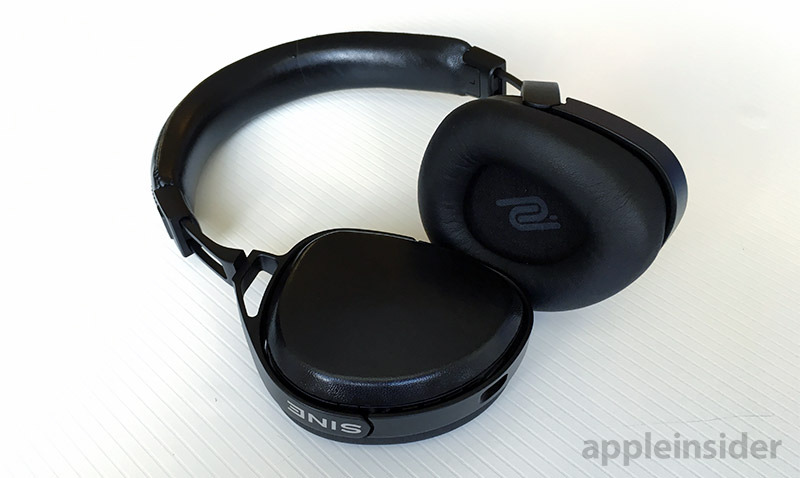
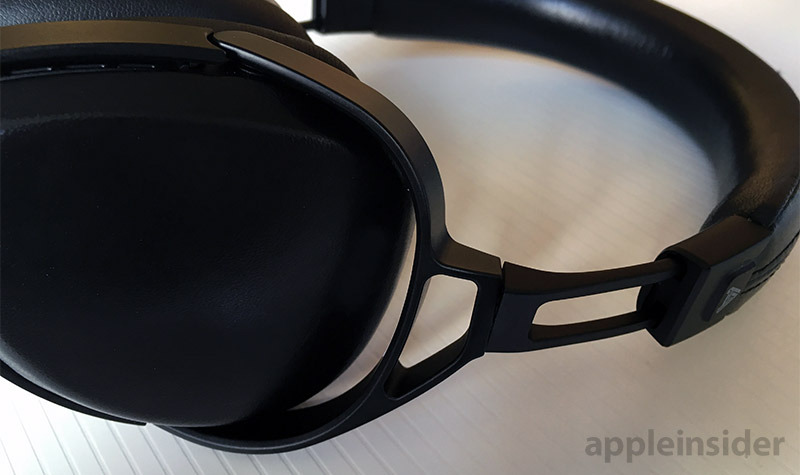

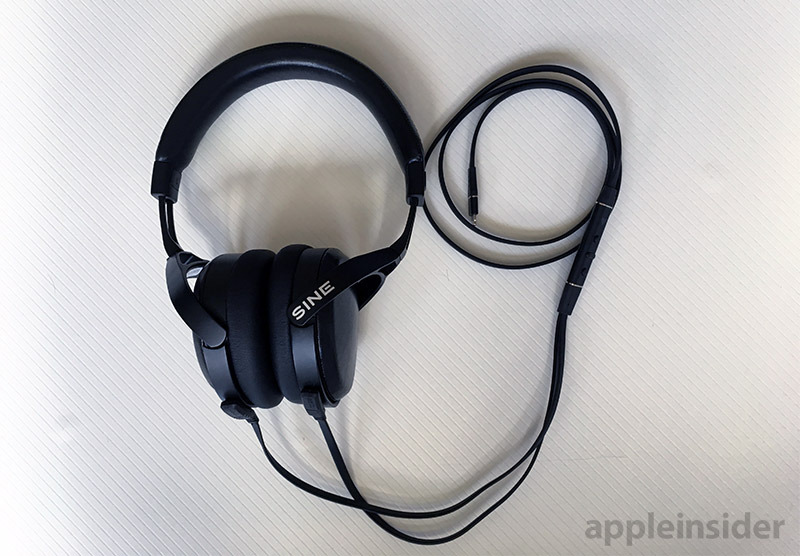
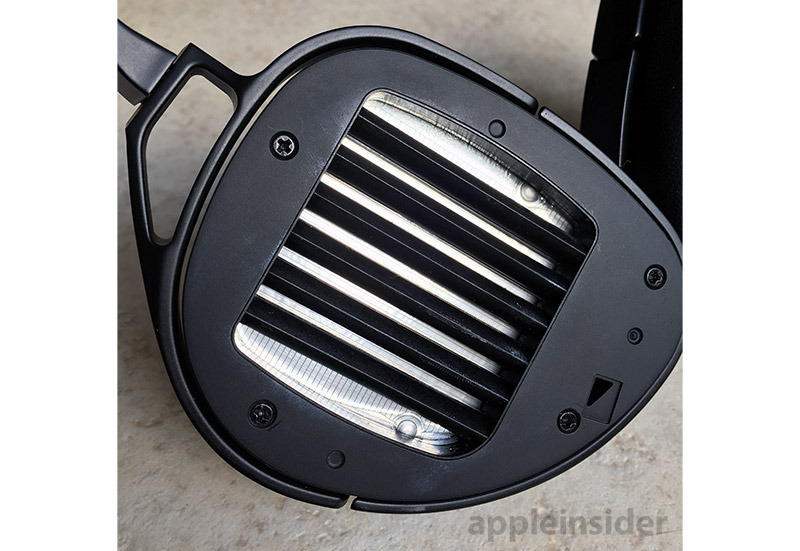
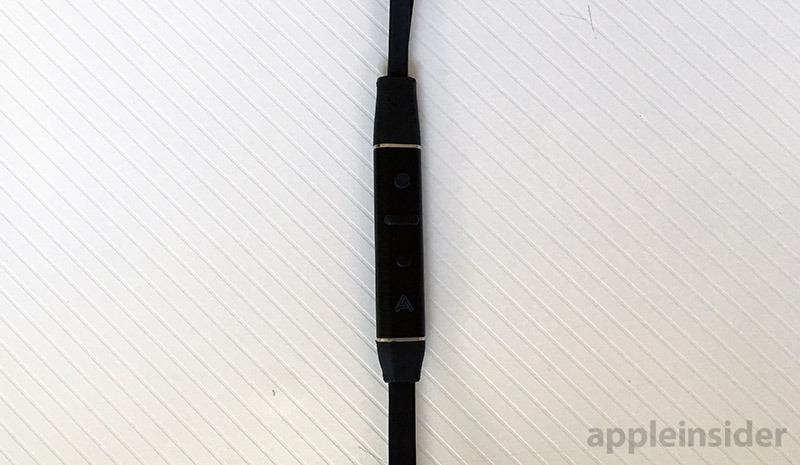
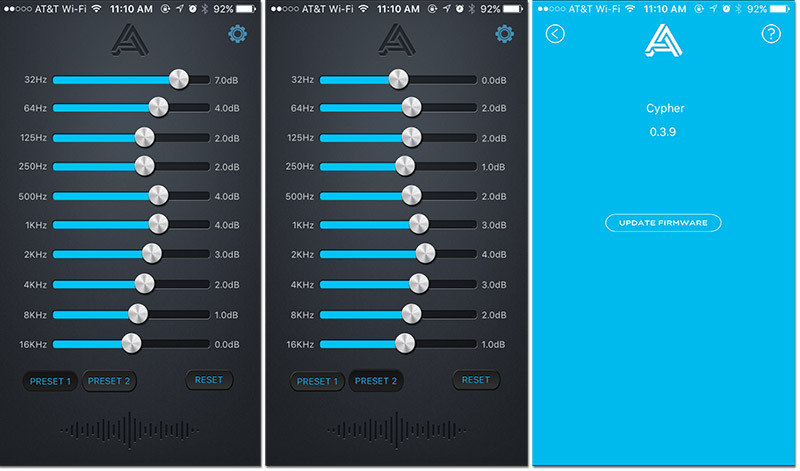








-m.jpg)






 Charles Martin
Charles Martin

 Malcolm Owen
Malcolm Owen
 William Gallagher
William Gallagher
 Christine McKee
Christine McKee
 Marko Zivkovic
Marko Zivkovic
 Mike Wuerthele
Mike Wuerthele










12 Comments
$450 headphones isn't what I would call "for the masses"
I'd like to see the power specs of just what the "cipher" module uses, vs. what the iPhones own internal ADC, DAC, DSP & amp drawn, which are not drawing power when audio is shifted outboard. I would imagine most of the power draw above what the internal iPhone audio chipset draws when not bypassed, will be for those large planar drivers.
These headphones have a lot of great reviews. And reviewers who have spent time comparing the Cipher to a direct connection have commented that there's a noticeable difference in quality (most likely due to the AMP portion of the Cipher cable being more properly matched to the drivers or specific processing in the DSP, rather than DAC quality).However, I take exception with this comment:
[quote]battery life could become a concern when listening for more than a couple hours, depending on volume and audio presets[/quote]
From my recollection, Lightning ports can only supply 20mA of current to external devices. At 20mA these headphones are not going to affect battery life at all. This also bring up another concern I have - that 20mA isn't enough current to drive really high-end headphones to significant volumes. Which is why I expect Apple to relax this limit and allow more current if they plan on moving forward with Lightning headphones (say 50mA or even 100mA).
Did you do any battery life tests to compare the Cipher cable to a direct connection?
regardless of the number of bits employed in the DAC. Its doubtful that lightning headphones will have any noticeable audio improvement over
their analog counterparts, although that not a good reason not to use lightning headphones.
The major drawback with lightning is going to be output voltage for high impedance and peak current for low impedance devices, Even this
difficulty will be overcome by tailoring the impedance and efficiency of the drive units to the available voltage and current.
Battery consumption will not be a problem as the extra power required for the Lighting adapter is compensated by the reduction in the phone
not having these audio components.
For Audiophiles, powered DACs with a lighting port should be the way to go (with a high price tag) a high price always makes audio sound
better.
Wait. What? It has a lightening connector?